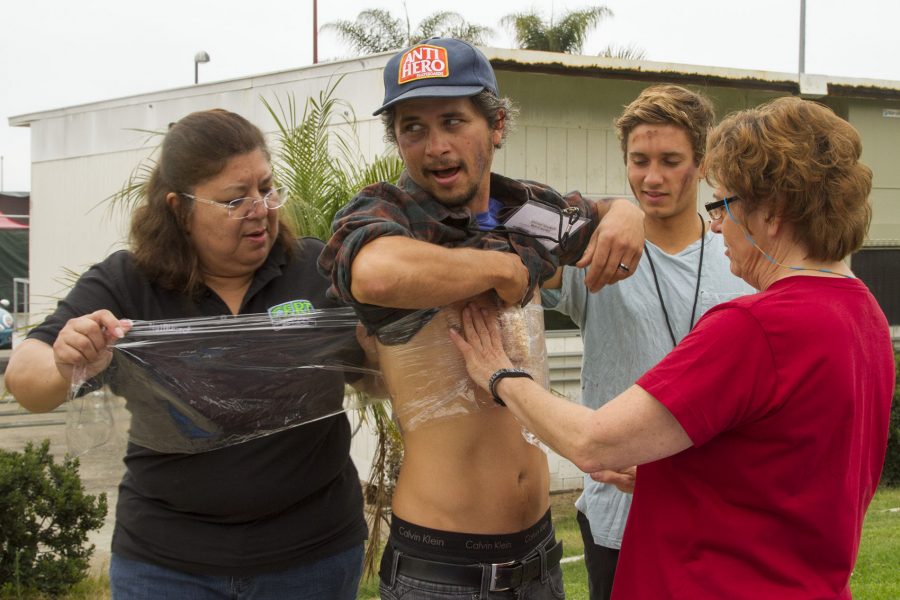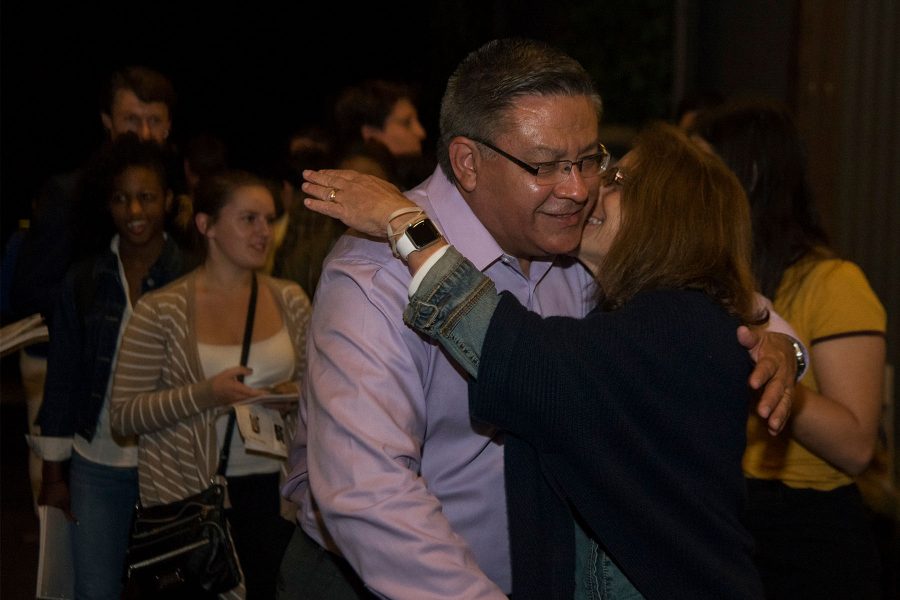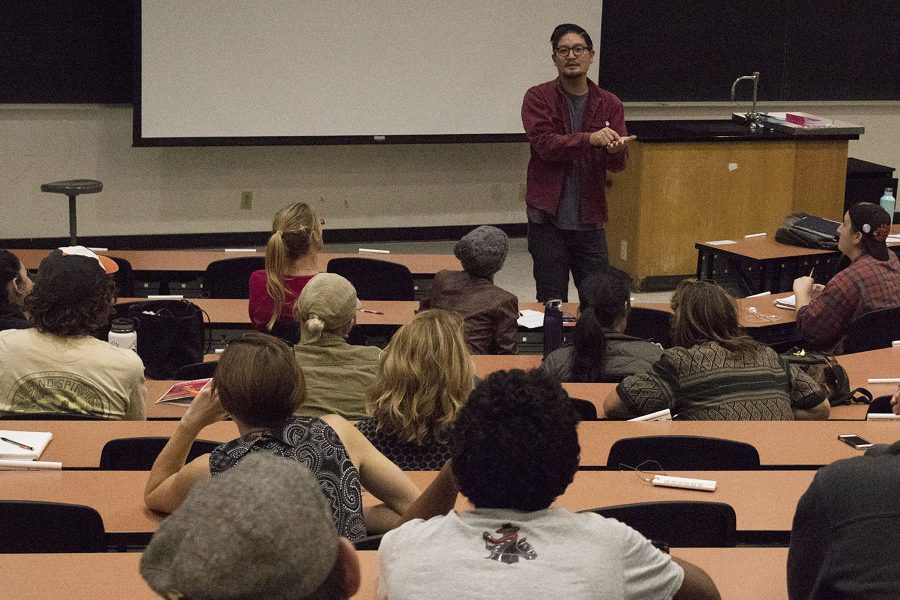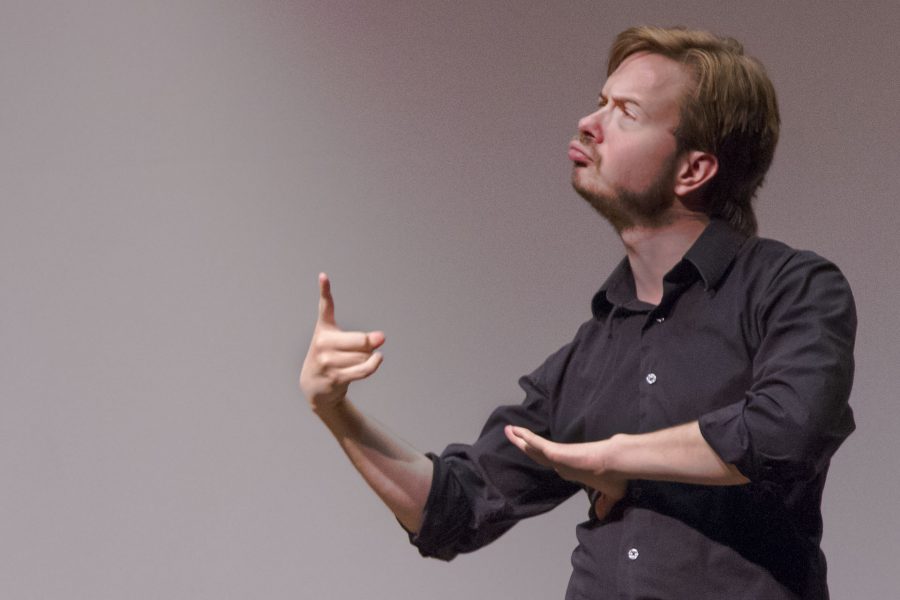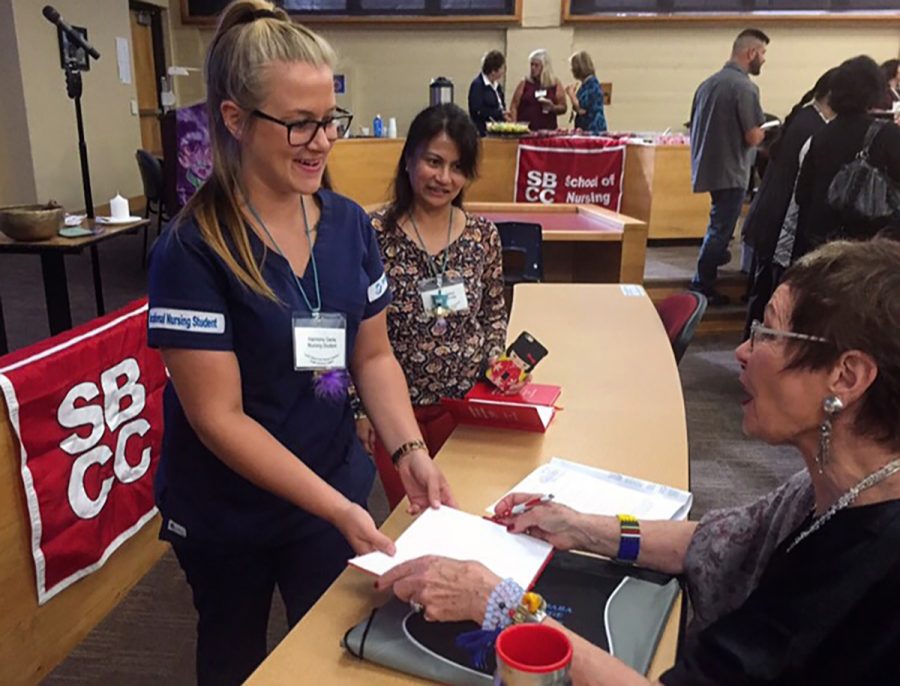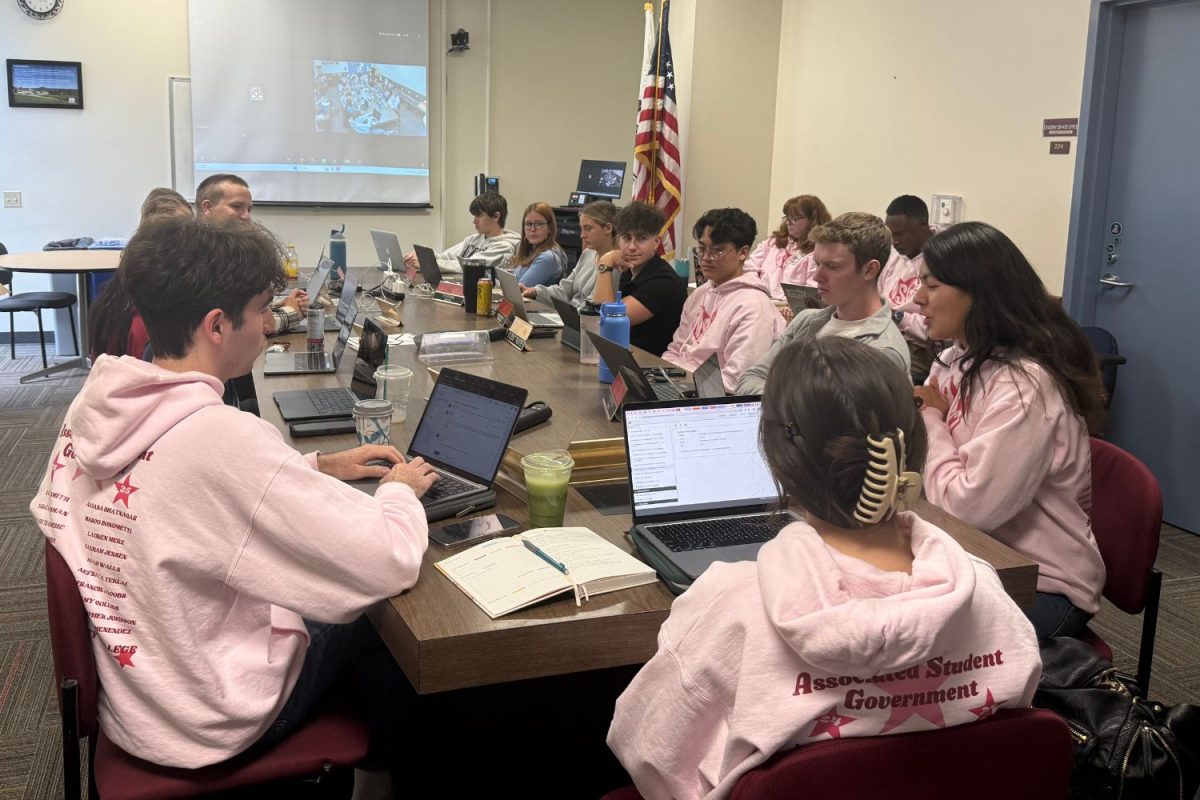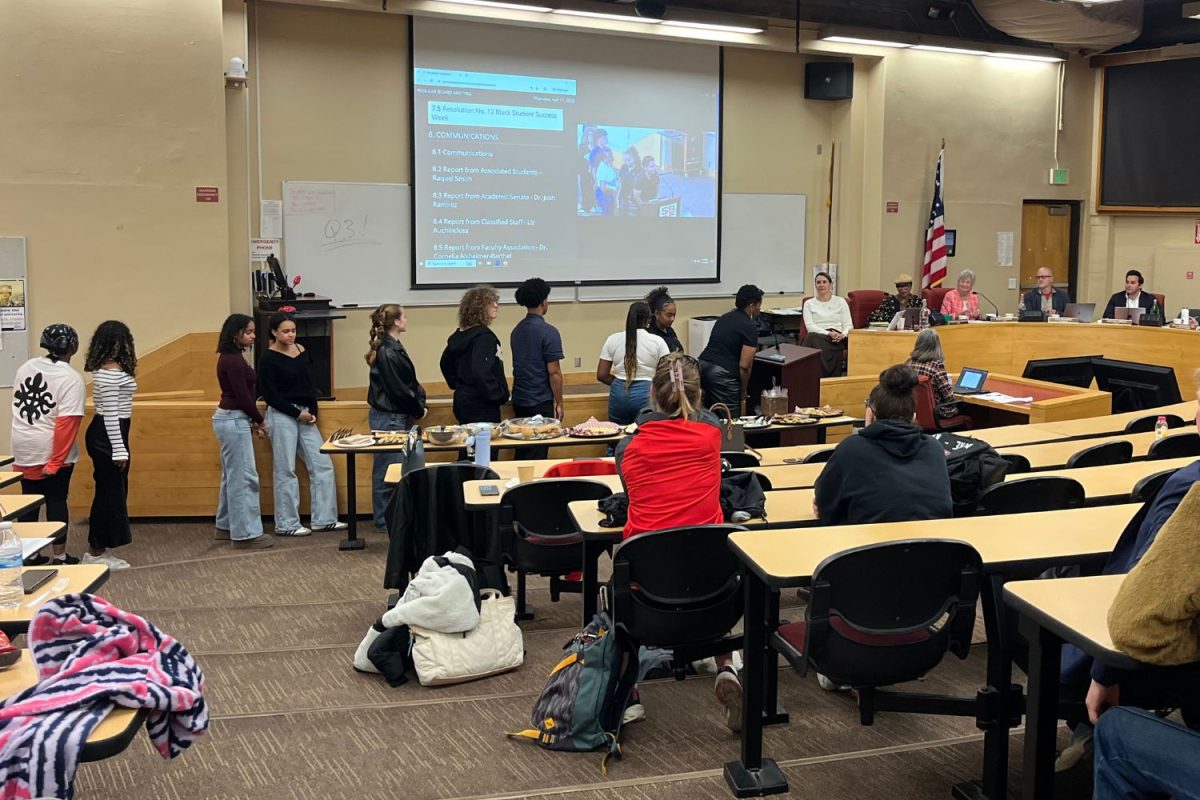City College’s typically tranquil campus erupted into imitated screams and horror Friday morning while staff and faculty members participated in a disaster simulation sponsored by the county.
The earthquake exercise put the group of 28 staff and faculty members into a scenario where 14 volunteer victims were trapped in three of the East Campus Classrooms.
Community Emergency Response Team members donned reflective vests and green hard hats. They applied disaster response skills taught to them by the Santa Barbara County Fire Department. Members had to locate and rescue victims and prioritize the urgency of injuries, a process called triage. The actor-victims Friday suffered from hysteria, head wounds and dismemberment.
“The misconception is that there will be a fireman at your door should something happen,” said Yolanda McGlinchey, the emergency service manager for the Santa Barbara Office of Emergency Services. “There won’t be—you’re the first responder.”
Team members should know how to handle disaster situations themselves should emergency personnel be unable to reach them.
During the simulation, members demonstrated fire safety, team organization, medical practices, basic search and rescue and disaster psychology required to lead their community in a crisis situation.
“We have to have more emergency awareness, man-made or otherwise,” said Alexandra Thierjung, an administrative assistant at City College who has participated in this event for several years. “We have the people, we have the opportunity. Why not be self-sufficient?”
Self-sufficiency in a disaster situation can mean survival, according to emergency experts. In situations such as the earthquake in Italy last week, emergency personnel could not reach all the victims because of road closures and debris.
“It’s about the greater good for the greater number of people,” said Anthony Rodriguez, an instructor for the county’s program. “You can use everything we teach you in everyday life. You can save a life.”
The lessons from the program can be applied to everyday emergencies. Stabilizing a child after an accident, providing basic first aid and helping individuals in medical emergencies are common examples.
For more information on how to enroll and receive free training, contact the department’s Public Education Officer Mike Eliason at (805) 681-5556.


